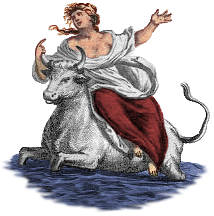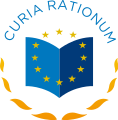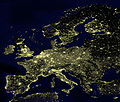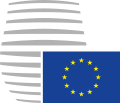Introduction
The European Union (EU) is a supranational political and economic union of 27 member states that are located primarily in Europe. The Union has a total area of 4,233,255 km2 (1,634,469 sq mi) and an estimated total population of over 448 million. The EU has often been described as a sui generis political entity (without precedent or comparison) combining the characteristics of both a federation and a confederation. Containing 5.8% of the world population in 2020, EU member states generated a nominal gross domestic product (GDP) of around US$16.6 trillion in 2022, constituting approximately one sixth of global nominal GDP. Additionally, all EU states except Bulgaria have a very high Human Development Index according to the United Nations Development Programme. Its cornerstone, the Customs Union, paved the way to establishing an internal single market based on standardised legal framework and legislation that applies in all member states in those matters, and only those matters, where the states have agreed to act as one. EU policies aim to ensure the free movement of people, goods, services and capital within the internal market; enact legislation in justice and home affairs; and maintain common policies on trade, agriculture, fisheries and regional development. Passport controls have been abolished for travel within the Schengen Area. The eurozone is a group composed of the 20 EU member states that have fully implemented the economic and monetary union and use the euro currency. Through the Common Foreign and Security Policy, the union has developed a role in external relations and defence. It maintains permanent diplomatic missions throughout the world and represents itself at the United Nations, the World Trade Organization, the G7 and the G20. Due to its global influence, the European Union has been described by some scholars as an emerging superpower. In 2012, the EU was awarded the Nobel Peace Prize. The United Kingdom became the only member state to leave the EU, in 2020; ten countries are aspiring or negotiating to join it. (Full article...) Selected article The Flag of Europe is the flag and emblem of the European Union (EU) and Council of Europe (CoE). It consists of a circle of 12 golden (yellow) stars on a blue background. It was created in 1955 by the CoE and adopted by the EU, then the European Communities, in the 1980s. The CoE and EU are distinct in membership and nature. The CoE is a 47-member international organisation dealing with human rights and rule of law, while the EU is a quasi-federal union of 28 states focused on economic integration and political cooperation. Today, the flag is mostly associated with the latter. It was the intention of the CoE that the flag should come to represent Europe as a whole, and since its adoption the membership of the CoE covers nearly the entire continent. This is why the EU adopted the same flag. The flag has been used to represent Europe in sporting events and as a pro-democracy banner outside the Union. Selected pictureThe night skyline of Frankfurt, showing the Commerzbank Tower (centre) and the Maintower (right of centre). Frankfurt is the fifth-largest city in Germany, and the surrounding Frankfurt Rhein-Main Region is Germany's second-largest metropolitan area. Did you know?... that the presidency of the EU Council rotates every half year? ... that the EU parliamentary election is the world's biggest transnational election? ... that the European Union was awarded the Nobel Peace Prize in 2012? Selected cityWarsaw is the capital of Poland and its largest city. It is located on the Vistula river roughly 370 km from both the Baltic Sea coast and the Carpathian Mountains. Its population as of 2011 was estimated at 1.7 million with a metropolitan area of approximately 2.7 million. The city area amounts to 517 km², with an agglomeration of 6100.43 km². Warsaw is internationally notable for giving its name to the Warsaw Pact, Warsaw Convention and the Treaty of Warsaw. The city is home to many industries, including manufacturing, steel, electrical engineering, and automotive; it features 66 institutions of higher learning, including Warsaw University, Stefan Wyszyński University, Warsaw University of Technology, Warsaw School of Economics, and a Medical Academy. Warsaw is home to over 30 theatres, including the National Theatre and Opera and the National Philharmonic Orchestra. General imagesThe following are images from various European Union-related articles on Wikipedia. TopicsFeatured contentFeatured articles
Featured lists
Featured contentGood articles
CategoriesRelated portalsAssociated Wiki HowThe following Wikimedia Foundation sister projects provide more on this subject:
Discover Wikipedia using portals |
🔥 Top keywords: Akademia e Shkencave e RPS te ShqiperiseAlexandria Ocasio-CortezBilderberg GroupCristiano RonaldoDong XiaowanMinecraftOperation GladioPrimal cutRiot FestStrictly Come Dancing (series 7)Main PageSpecial:SearchWikipedia:Featured picturesJayson TatumJuneteenthUEFA Euro 2024Jaylen BrownAl HorfordBoston CelticsJoe MazzullaList of NBA championsCristiano RonaldoHouse of the DragonPage 3Noam ChomskyJrue HolidayCleopatraDeaths in 2024.xxxArda GülerPepe (footballer, born 1983)Inside Out 2Georgia (country)MāuiBo DallasBridgertonUEFA European ChampionshipCzech RepublicJustin Timberlake2024 NBA FinalsYouTubeFrancisco ConceiçãoKristaps PorziņģisThe Boys (TV series)Chad GableRoberto MartínezNoam chomskyDerrick White (basketball)Anouk Aimée































































